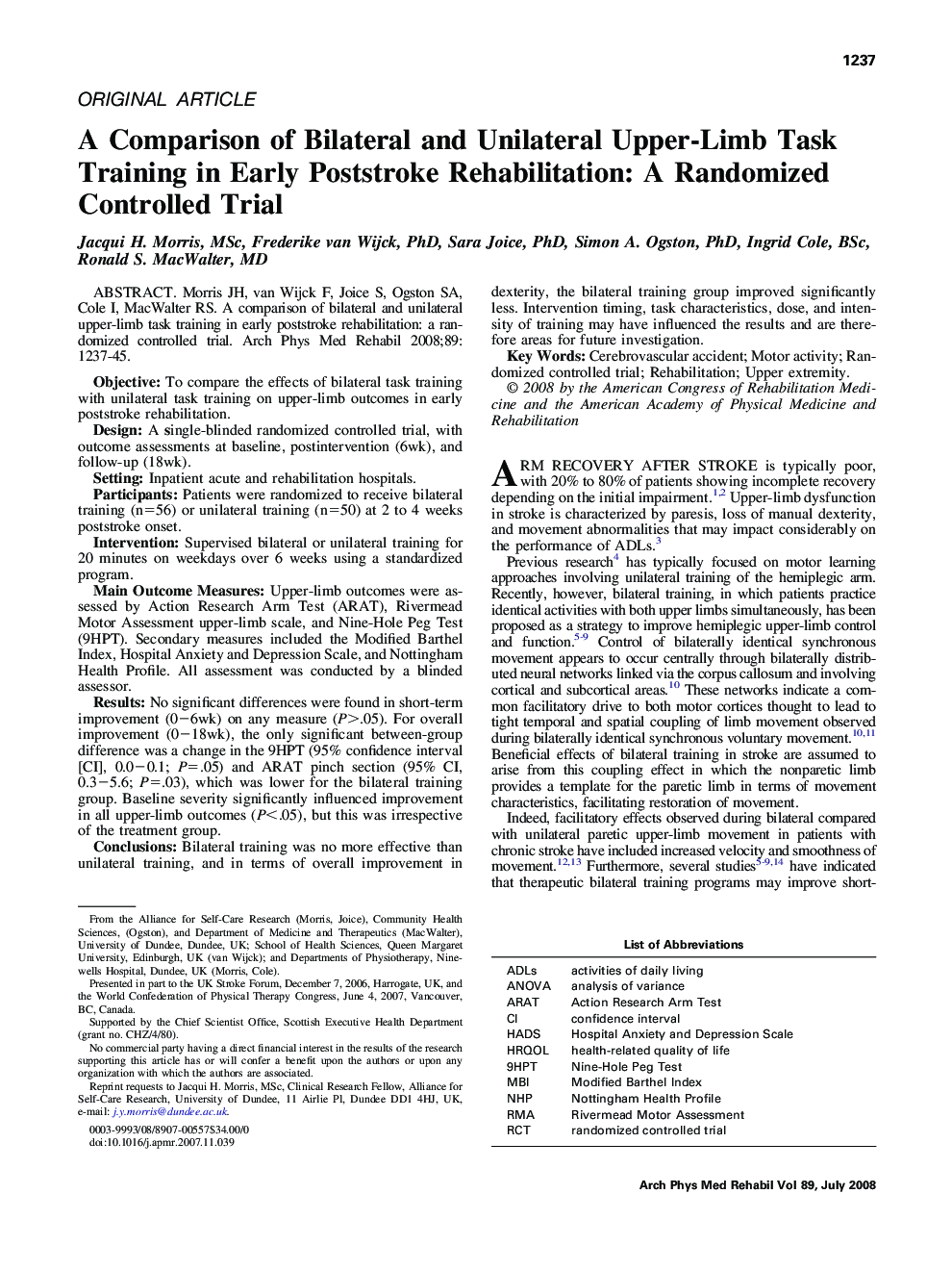| کد مقاله | کد نشریه | سال انتشار | مقاله انگلیسی | نسخه تمام متن |
|---|---|---|---|---|
| 3450587 | 1595777 | 2008 | 9 صفحه PDF | دانلود رایگان |

Morris JH, van Wijck F, Joice S, Ogston SA, Cole I, MacWalter RS. A comparison of bilateral and unilateral upper-limb task training in early poststroke rehabilitation: a randomized controlled trial.ObjectiveTo compare the effects of bilateral task training with unilateral task training on upper-limb outcomes in early poststroke rehabilitation.DesignA single-blinded randomized controlled trial, with outcome assessments at baseline, postintervention (6wk), and follow-up (18wk).SettingInpatient acute and rehabilitation hospitals.ParticipantsPatients were randomized to receive bilateral training (n=56) or unilateral training (n=50) at 2 to 4 weeks poststroke onset.InterventionSupervised bilateral or unilateral training for 20 minutes on weekdays over 6 weeks using a standardized program.Main Outcome MeasuresUpper-limb outcomes were assessed by Action Research Arm Test (ARAT), Rivermead Motor Assessment upper-limb scale, and Nine-Hole Peg Test (9HPT). Secondary measures included the Modified Barthel Index, Hospital Anxiety and Depression Scale, and Nottingham Health Profile. All assessment was conducted by a blinded assessor.ResultsNo significant differences were found in short-term improvement (0−6wk) on any measure (P>.05). For overall improvement (0−18wk), the only significant between-group difference was a change in the 9HPT (95% confidence interval [CI], 0.0−0.1; P=.05) and ARAT pinch section (95% CI, 0.3−5.6; P=.03), which was lower for the bilateral training group. Baseline severity significantly influenced improvement in all upper-limb outcomes (P<.05), but this was irrespective of the treatment group.ConclusionsBilateral training was no more effective than unilateral training, and in terms of overall improvement in dexterity, the bilateral training group improved significantly less. Intervention timing, task characteristics, dose, and intensity of training may have influenced the results and are therefore areas for future investigation.
Journal: Archives of Physical Medicine and Rehabilitation - Volume 89, Issue 7, July 2008, Pages 1237–1245